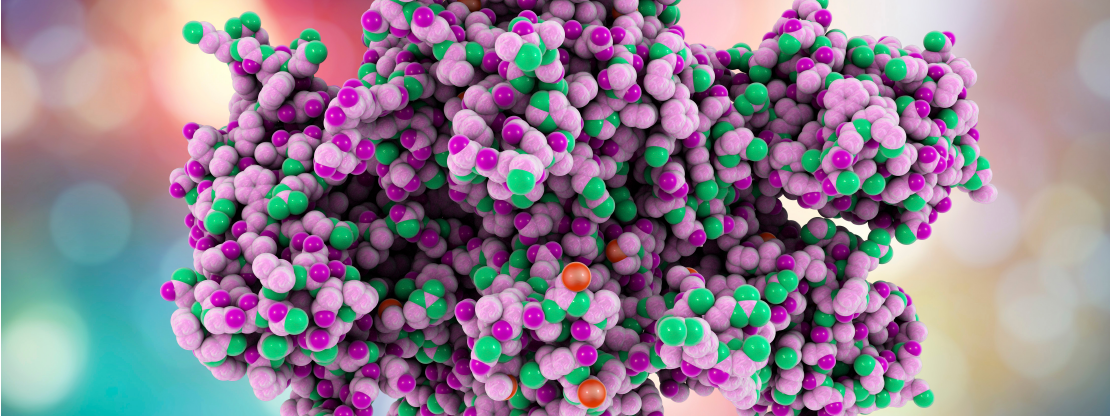At this point in the year, who isn’t in need of a little break? Test your knowledge of proteins, and maybe even learn something new, with our quiz.
Good luck!
- What is a protein?
A. A nutrient that is not made by the human body but that is essential to help the body function
B. The only nutrient a bodybuilder needs
C. A polymer made of amino acids
D. A nutrient that we get only from eating meat
C. Polymers are large molecules made from smaller molecules. Proteins are polymers made from amino acids, and each protein may consist of hundreds, or even thousands, of amino acids.
- True or false: There are 20 different types of amino acids that can be combined to make a protein.
True! The sequence of these amino acids determines each protein’s unique, 3D structure and its specific function in our body. And while there are only 20 amino acids, the human body contains an estimated 100,000 different proteins because there are so many ways those amino acids can combine.
- Where do amino acids come from?
A. The food we eat
B. The air we breathe
C. Our bodies themselves
D. Both A and C
D. The amino acids in our body come from the food we consume, but we also make about half of the amino acids we need on our own.
- How many amino acids are essential for humans?
A. 7
B. 15
C. 9
D. 20
C. Nine of the 20 amino acids are essential to prevent protein-energy malnutrition and, subsequently, death. The human body does not synthesize these nine, so they must come from our diet. Foods including seafood, lean meat and poultry, eggs, beans and peas, soy products, and unsalted nuts and seeds are among the dietary sources.
- How can scientists determine the structure of a protein?
A. Using black light photography
B. Using cryo-electron microscopy
C. Using a standard microscope
D. Using a mathematical equation
B. Cryo-electron microscopy, or cryo-EM, helps scientists “see” individual proteins. At VAI, scientists are able to view some of life’s smallest components in exquisite detail thanks to the state-of-the-art David Van Andel Advanced Cryo-Electron Microscopy Suite. VAI’s most powerful microscope, the Titan Krios, can visualize molecules 1/10,000th the width of a human hair.
- True or false. Proteins can be found in only certain cells in the body.
False. Proteins are major structural components of all cells in the body, including organs, hair, skin, and especially muscle. Proteins are also needed to form blood cells.
- Why are structural biologists particularly interested in proteins?
A. Proteins contribute to virtually every activity in the body.
B. They want to maximize their muscle gains at the gym.
C. Misfolded or misshapen proteins can cause diseases.
D. Both A and C.
D. Because proteins play a role in almost every part of the human body, they may be able to help scientists determine new treatments for many diseases, including cancer, neurological disorders, diabetes and more.
- True or false: A taste-sensing protein that helps you enjoy your favorite meal could one day lead to improved ways to treat some diseases.
True! In fact, a team led by scientists at VAI recently published the first-ever high-resolution images of this protein, TRPM5, which reveal two areas that may serve as targets for new medications. The structures may also aid in the development of low-calorie alternative sweeteners that mimic sugar.
Sources:
